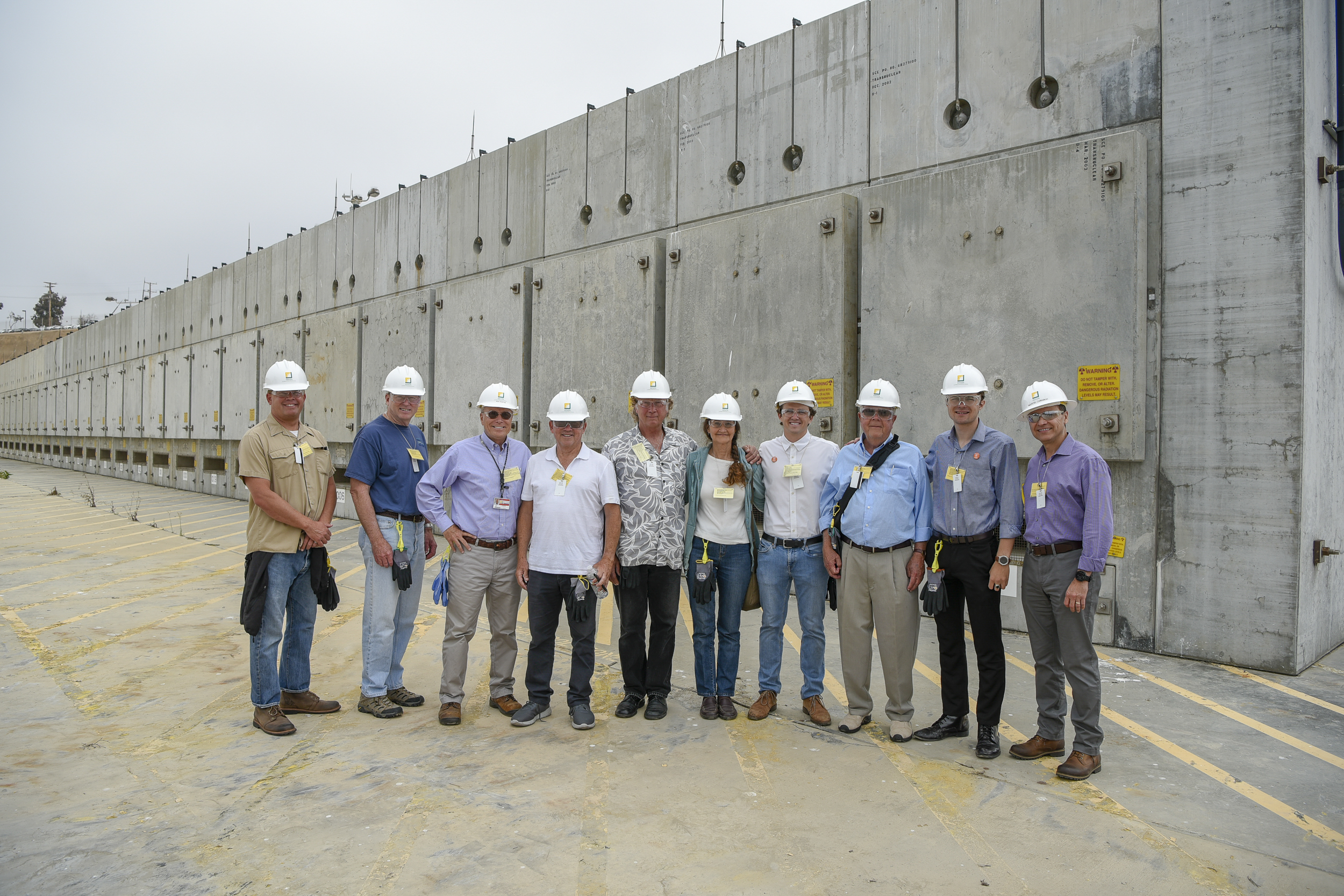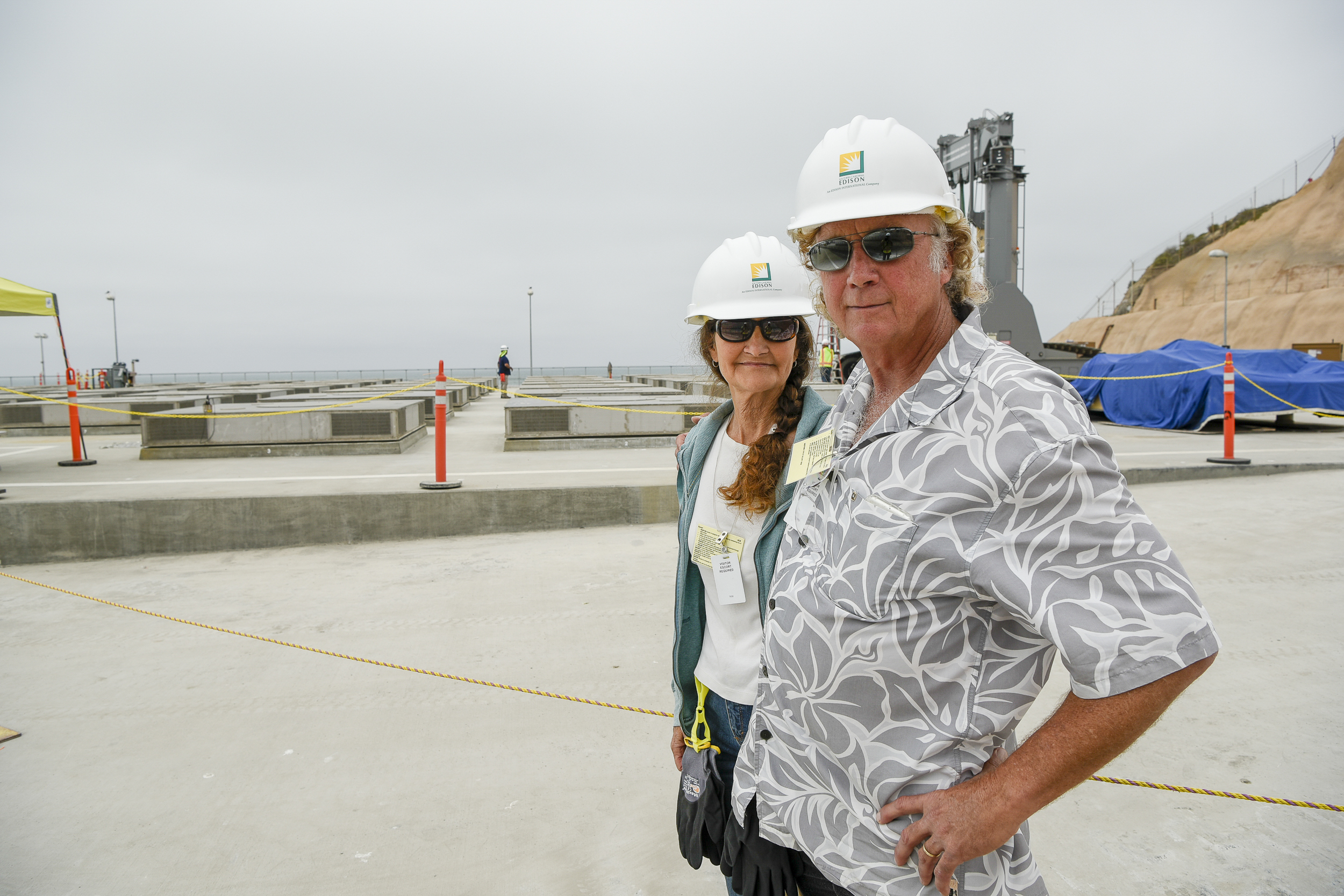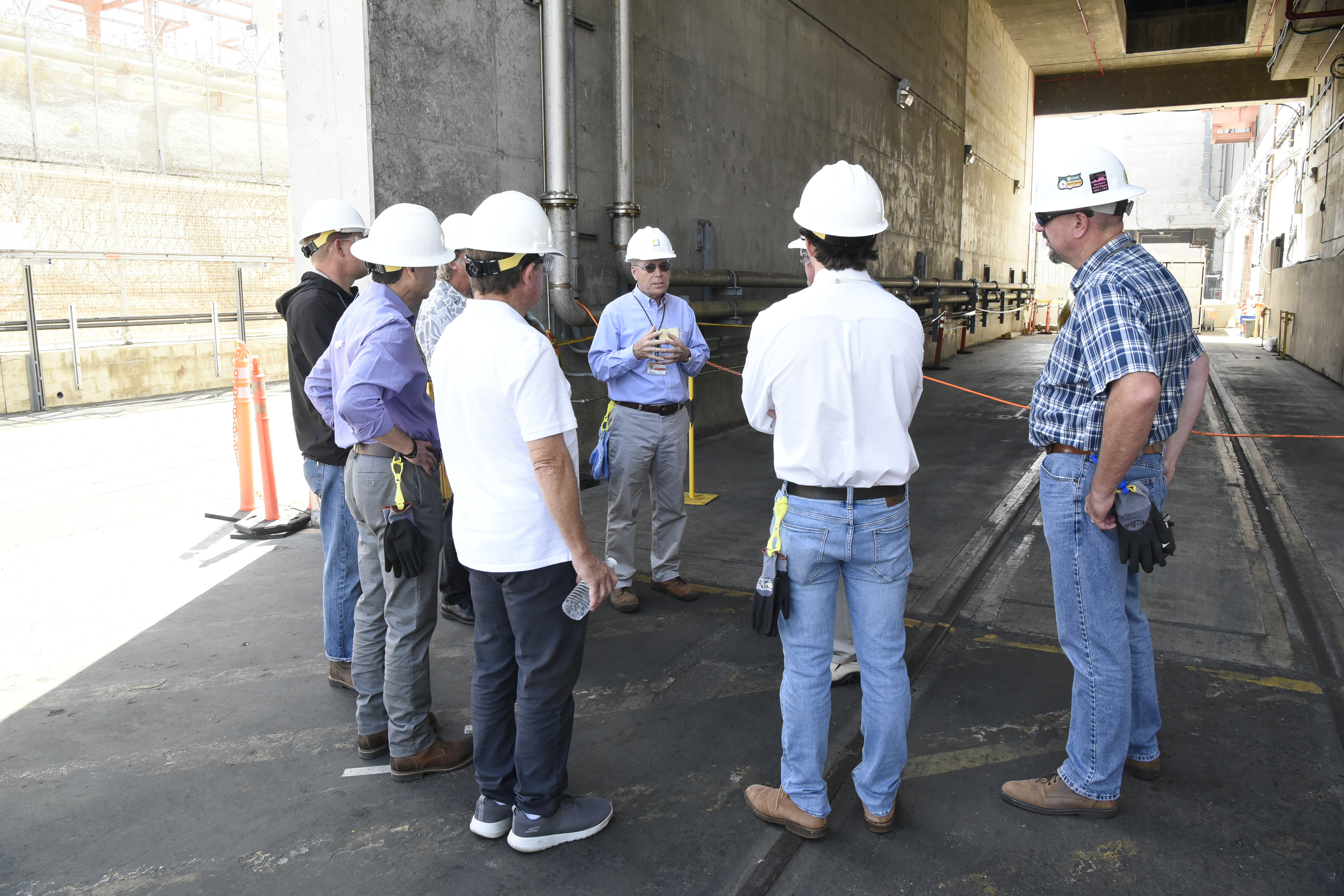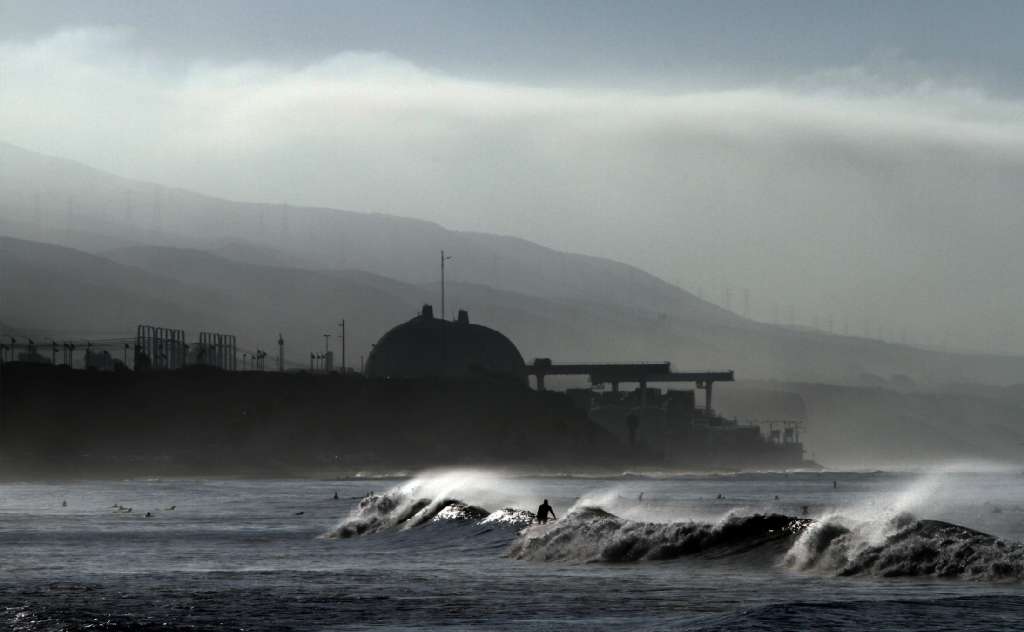Behind The Walls Of A Defunct Nuclear Plant
Lessons learned from a tour of the San Onofre Nuclear Generating Station.
“We can’t say the number is zero.”
That was the response of an official at the San Onofre Nuclear Generating Station [SONGS] last week when pressed about how much potentially radioactive material is released into the air and ocean. They insist that everything that comes out of the defunct nuclear plant meets all Nuclear Regulatory Commission [NRC] guidelines and rules.
No cause for alarm, right?
Wrong. Just because they meet all their target numbers doesn’t mean that what comes from the plant’s steam vents and undersea outflow pipes is healthy for humans and the environment, it just means that they’re in compliance with the bureaucracy that oversees them.
Last week, I was given the opportunity to tour the facility and see with my own eyes and hear with my own ears what’s going on behind those big, gray concrete walls.
The tour started in the parking lot at the south entrance to the plant. In the distance a small cadre of stand-up paddlers revelled in the peaks at Nukes, a gentle peak directly in front of the “boobs.” It was clean, glassy, six-foot, firing and a striking juxtaposition.

Group photo in front of Nuhoms system.
After going through the security protocol and listening to the safety briefing, our small tour group, comprised of a handful of environmentally minded citizens, descended into the heart of the plant. Ushered along by Southern California Edison employees and a heavily armed security detail, we were not free to wander or explore the plant, rather we were served a well-prepared script of what is currently going on in the plant.
“That’s classified,” was the response when we asked what the size of the omnipresent security detail at the plant was.
On June 7, 2013, SONGS officially began its decommissioning process. Since that time 3.55 million pounds of nuclear fuel has been left to cool in the “ponds” inside reactors 2 and 3 (it’s now somewhere in the neighbourhood of a “more manageable” 400 degrees centigrade after six years).
Reactor 1 was taken offline in 2001 and there are currently 51 canisters of waste from that reactor stored onsite. The spent fuel from reactors 2 and 3 is in the process of being removed from “wet storage” and put into “dry cask storage.” The process has already begun in earnest and SONGS is filling a new storage cask at an average rate of one every 10 days. When it’s all said and done, there will be 73 canisters of nuclear waste from reactors 2 and 3 sitting a stone’s throw from the whitewater at San Onofre.
“There is no real-time monitoring that is available,” we were told. “The storage units are checked for radiation once a quarter and we file a report with the NRC every year. If there was a leak it would be very small and very slow, and we would be able to address it according to the plans we have in place.”
Over the course of the next 18 to 24 months, all 73 of these sealed canisters will be inserted into the concert matrix that Edison has constructed. They hope to be completed with the project by the end of 2019. And here’s where it starts to get really unnerving.
“The reinforced concrete pad that the canisters are sitting on is about three feet above the water table.”

Gary and Laurie on Holtec ISFSI pad.
For reasons I do not understand and couldn’t get a clear answer on, the plant was designed around the mean low tide line. Edison boasts that there is a 30-foot seawall protecting it in case of a tsunami or other oceanic event. That measurement is based on the water level at low tide and doesn’t taken into account swell activity or sand flow. All you have to do is go surf Trail 1 at San Onofre on a pulsing swell and big tide to see how much the coastline continues to change. Taking a tape measure to the wall today, it measures less than 15 feet, the rest is buried under sand. And right on the other side of that wall sits all the nuclear waste…in stainless steam canisters…three feet above the water table.
Do you know what kind of health and environmental effects nuclear waste can do if it gets into the water table? Neither do I, but I bet it’s not good.
The sad fact is, no matter how involved the public gets or what the press writes, at the end of the day Edison only has so much control of the process and there’s nowhere to put any of this stuff. It’s easy to point fingers and say they’re cutting corners to save costs or that they just want to wipe their hands of this mess as quickly as possible. That may or may not be true, but what is true is that the United States federal government has failed miserably to put any semblance of a plan together for the long-term storage of spent nuclear fuel. They’ve failed so completely that at present there is no plan at all.
The nuke plant at San Onofre is a unique case because if something does go awry the implications are massive. More than eight million people live within a 50-mile radius of the plant. As well, Camp Pendleton is one of the biggest U.S. military bases in the country and holds enormous strategic importance (the land SONGS was built on is leased from the Navy, Edison simply licensed it). But the issue is much larger than one plant. There are no less than 100 nuclear power plants around the U.S. that will be going offline in the years to come. Currently there are no facilities in the country prepared to permanently store any of the waste.
Talks have been ongoing about building a long-term storage facility somewhere in Texas, New Mexico, Arizona or Nevada, but at present nothing is being constructed and short-term, band aid solutions are the only game in town.
The canisters the SONGS waste is being put in are purported to have a shelf life of 20 years. Then what?
“That’s actually just the warranty,” we were told. “They could last as long as 60 or 100 years.”

Within the next decade the only thing that will be left of SONGS will be some bits and pieces of infrastructure supporting the Southern California electrical grid and the 120-plus containers of spent nuclear fuel. One could say it will almost be out of sight, out of mind.
Anybody ever bought anything that came with a warranty? What usually happens when the warranty expires? That’s right, shit starts falling apart. But with nowhere to put the radioactive waste and confident their canisters will last well over the 20-year warranty don’t except the waste that’s currently sitting on the shoreline to go anywhere for at least a generation or two.
The other part of the decommissioning process is the actual removal of the two domes that house reactors 2 and 3, affectionately known by locals as “the boobs” or the “nuclear ta-tas.”
“By 2027 or 2029 they will be gone.”
Basically, within the next decade the only thing that will be left of SONGS will be some bits and pieces of infrastructure supporting the Southern California electrical grid and the 120-plus containers of spent nuclear fuel. One could say it will almost be out of sight, out of mind.
In the short-term it seems there’s little that can be done. Edison is moving full steam ahead with transferring the spent nuclear fuel from wet to dry storage. They insist that they are in complete compliance with the NRC’s rules and regulations and the canisters they’re utilizing are up to the task. Concerned citizens need to push for better monitoring and more transparency, but the actual process of storing the waste will proceed relatively unimpeded.
It’s the long-term solution that really needs attention. The U.S. government needs to address the situation and figure out a way to get nuclear waste out of communities and into safe, secure storage. That’s really where the fight is. Massive political and economic pressure needs to be brought to bear on the powers that be so that they come to a solution sooner rather than later.
The dilemma of what to do with spent nuclear fuel could quickly become the leading environmental issue facing America in the 21st Century…and surfers are right there on the front lines.

A little perspective. (Photo: LA Times)













Comments
Comments are a Stab Premium feature. Gotta join to talk shop.
Already a member? Sign In
Want to join? Sign Up